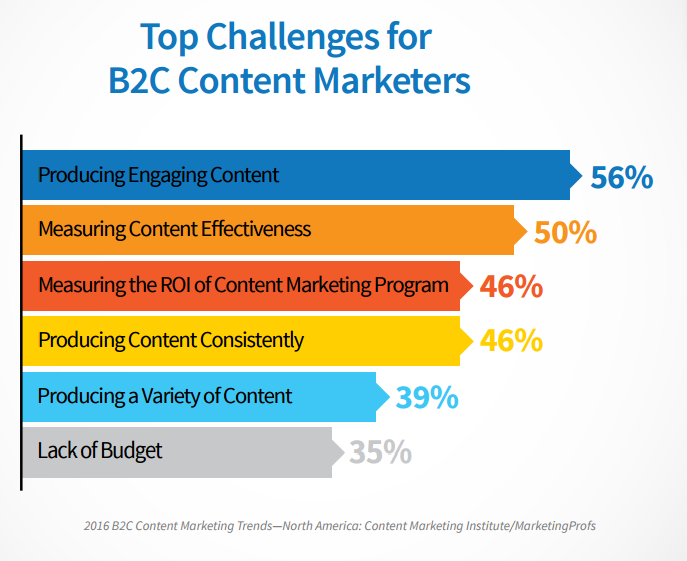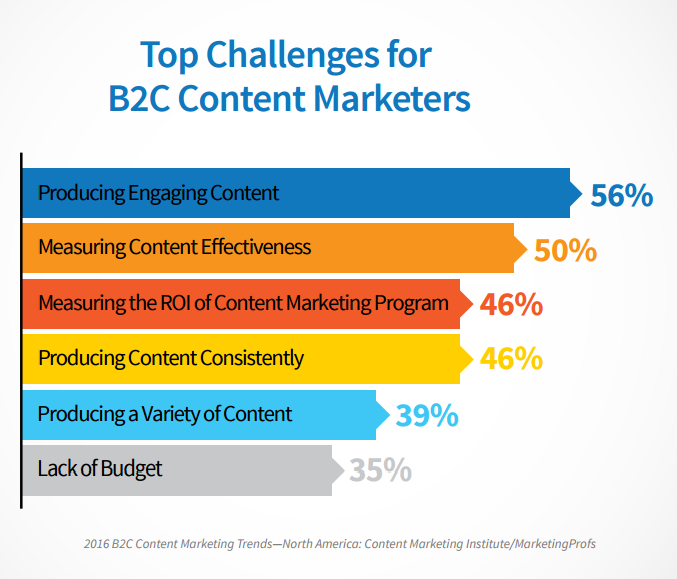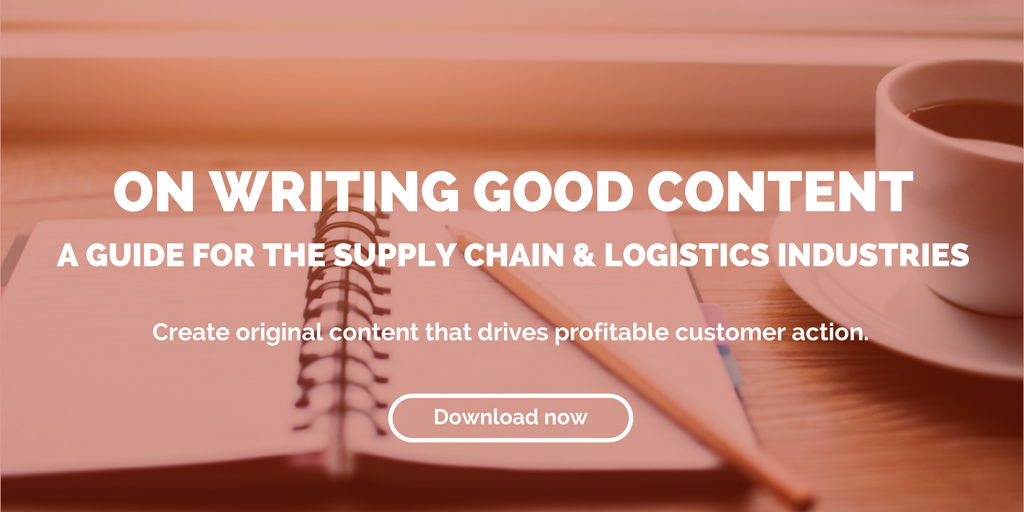
by Fronetics | Jun 2, 2016 | Blog, Content Marketing, Marketing

As the prevalence of smartphones increases, businesses must consider how their emails appear on mobile devices.
You may have created a marketing email masterpiece, but how will it look when someone reads it on a cell phone? This is a very real concern, considering that 56% of email opens occur on mobile devices.
The ubiquity of smartphones has changed our relationship with email. The 72% of American adults who own smartphones are checking email much more frequently throughout the day. This equates to better chances for your brilliant marketing email to be seen and read.
But, the caveat is that your email, which is typically designed to be read on a laptop or desktop computer, must be easy to read on any device. If you send a marketing email that is not optimized for mobile, more than half of your recipients are straining and struggling to read your content. You’ve given them a good reason to delete it instead of reading it.
Here are a few tips for optimizing emails for mobile:
Keep it short and sweet.
Your message should be well articulated but simple. Keep paragraphs short and concise, and put all of the most relevant facts first.
Don’t picture this.
When it comes to images, less is more. Android devices automatically block images unless the user changes their settings. And for those who do see your image, it’s rarely optimized for their specific phone, since shapes and sizes of mobile screens vary. It becomes work for your reader to try to shrink or enlarge the image to see the whole message. Also note that when you embed large image files, they may take an excessively long time to load.
Hello. It’s me.
Be very concise with your “subject” and “from” lines, which are super-condensed on cell phones. For example, an iPhone (held vertically) only displays the first 25-30 characters of a subject line. Often, sender’s name is boldfaced and the first thing the reader sees. Make it easily recognizable!
Responsive: your new best friend.
Choose a “responsive” template, which will automatically fit an email to the screen on which it’s being viewed. This assures you that your marketing email will look the way you intended, whether it is viewed on a smartphone, tablet, laptop, or desktop computer. WordPress has pre-built themes that incorporate responsive design elements. Unfortunately, there’s no simple plugin to make a non-responsive template responsive.
Button up.
Avoid adding links. Use a button instead for your call-to-action. Make sure to set plenty of space around it, so it is easy to click without accidentally clicking something else. Buttons essentially prove to be much easier for people to click on when using a touchscreen.
Keep in mind: With 98.4% of the market share today, Android and iOS are the operating systems your emails typically will be viewed on.
To remain competitive, your marketing email designs must be optimized for mobile to remain consistent across multiple devices. It is wise to test how your emails look on different devices to see how they appear on each screen. But most importantly, choose a template that is responsive, and make these five tips a regular part of your email marketing strategy.
Related posts:

by Fronetics | May 17, 2016 | Blog, Content Marketing, Marketing, Strategy
Producing engaging content is the number one challenge for content marketers.
Is content marketing working well for your business? If not, you are not alone. Though it is one of the most effective ways to grow your business, content marketing has been challenging B2B and B2C organizations since its inception.
You may think it should be simple: Write, post, get more customers. But content marketing is much more complex, demanding more time, thought, and careful strategy than churning out a few blog posts. First and foremost, what you produce must engage readers. This is, however, the biggest content marketing challenge facing both B2B and B2C marketers.
2016 reports produced by Content Marketing Institute and MarketingProfs, and sponsored by Brightcove, found that the number one challenge for B2B and B2C marketers is producing engaging content.


Dull content and the domino effect
Unfortunately, if you lack engaging content, it works like a domino, knocking down all your other marketing efforts.
For one, it is much easier to gain the support of the C-suite, and be granted a reasonable budget, for your content marketing plan if you can show that your strategy is attracting more customers, helping with conversions, and driving sales. But if your content is not producing results, you won’t get the support and resources you need to produce the content, which, in turn, fuels results. It is a vicious cycle.
That being said, lack of engaging, quality content may be indicative of other challenges you may be facing, like the resources to produce content.
Creating engaging content
There are a few basics you must address if you are going to produce engaging content:
- Research your customer demographic. You must know who your audience is, what they want to know, how they want to learn it, and where to find them. Use web analytics to learn how your audience interacts with your website, what kinds of posts and emails they are reading, and where improvements can be made.
- Do your due diligence and learn how to reach those potential customers with topical information they want and will read. This means conducting a solid analysis of trends in your industry and producing content that offers expert information on these subjects or answers pressing questions potential customers may have about them. You, thus, will establish your organization as a trusted voice for your industry. This leads to dialogue with prospects and customers that want to learn more from you about industry news — or, even better, who are interested in your products or services.
- Research your distribution channels. This can affect not only what you post, but where and when you post it. Know your target’s social media habits, when they read emails, and what they are looking for. Research your competition and learn which channels they focus their attention on and why. Read the latest industry publications and influential blogs to uncover what topics work to engage their readers. Look for trends and answer to them.
- Look at SEO evaluations and site audits to help identify new middle- and bottom-of-the-funnel opportunities for content.
- Tell a story.
If creating engaging content has proven to be challenging for your business, consider outsourcing your content creation, or your marketing program all together. According to Social Media Today, lack of marketing staff can make it difficult for organizations to produce enough content to keep up with their competition.
Quality research and consistent creation of engaging, relevant content is time-consuming and requires keen writing skills. Promoting your posts on social media also takes time and requires consistent effort. Some of the most successful organizations put this task in the hands of an expert that can create and leverage content to provide the greatest impact to your brand, lead generation, and new customer conversion rate.
Related posts:


by Fronetics | May 5, 2016 | Blog, Content Marketing, Marketing, Strategy

Speak your boss’ language with metrics, statistics, and facts that articulate content marketing’s impact on customer acquisition and sales.
Garnering C-suite support for your content marketing program can be a challenge. Your team knows that your strategy is working by evaluating a series of metrics (e.g., shares, website traffic, email click-through rates), but executives do not always understand the value of such measures. It is almost like marketers speak another language.
So, how do you articulate the value of content marketing in a way that your executives will understand and support? Think of it this way: It is like that scene in the movie Jerry Maguire, only it is your boss demanding, “Show me the money!” The C-suite wants to know the cost to the company and the dollar amount of the return for any marketing initiative you undertake. Basically, you need to quantify success in terms of customer acquisitions and new sales.
Don’t focus on the secondary results, or “soft” metrics like per-post Facebook engagement. Talk the C-suite’s language, and demonstrate how your content marketing efforts led to new customers and what those customers are worth to the company’s growth and success.
Report these six metrics to win C-suite support
- Customer Acquisition Cost (CAC): This is the total average cost your company spends to acquire a new customer. Basically, what your company spends in marketing costs, divided by the number of new customers it produced.
- Marketing Percentage of the CAC: This is the marketing department costs divided the costs of the sales and marketing costs to get the marketing percentage of overall cost per new customer. The figure demonstrates if more is going into the sales team or the marketing team to produce the current result, and the lower the percentage the better.
- Ratio of Customer Lifetime Value to CAC: This figure estimates the total value that your company derives from each customer versus what you spend to acquire them.
- Time to Payback CAC: This estimate demonstrates how many months it takes for your company to earn back the CAC it spent acquiring your new customers.
- Marketing-Originated Customer Percentage: This is where you look at all of the new customers from a set time period and determine what percentage of them started with a lead generated by your marketing team.
- Marketing-Influenced Customer Percentage: This figure highlights all of the new customers that marketing interacted with at the time they were still just leads.
Additional selling points for content marketing
Content marketing can make a big impact on your company in terms of spreading brand awareness, growing your audience, and helping form business relationships. Though these benefits are difficult to quantify, try using the following statistics and facts to articulate the value your program could have in a way your executives will understand.
- As any business knows, it is essential to be where you customers are, and they are online. Your competitors know this, too. In fact, a recent study indicated that that 77% of companies surveyed, across industries, had plans to increase their digital marketing budgets in the coming year.
- The B2B buying process has evolved, and now content is an essential tool for generating and nurturing leads. Reportedly, 88% of B2B marketers use content marketing as part of their programs, with lead generation (85%) and sales (84%) being the most important goals.
- Blog content has long-term value, as what you post today may continue attracting traffic months (or years) from now. Your posts last indefinitely, outliving more traditional marketing methods, such as a print advertisement in a magazine.
- Consistently publishing quality content can earn your company a reputation as a thought leader in your industry. The public will come to trust your company as a respected source of knowledge, and you’ll begin forming relationships with readers who want to know more about your products and services. People buy from companies that they trust and feel connected to.
- Content marketing will get you more bang for your buck. Results are not instant, but, with time, you can actually reduce your marketing expenses while increasing your reach and growing your business.
- Content marketing is a valuable business intelligence tool. By distributing content through social media platforms, you not only engage potential customers, but you get their feedback and learn more about their needs and wants.
For more on marketing metrics that will articulate success to your boss, download Fronetics Strategic Advisors’ tip sheet.
Related posts:

by Fronetics | Apr 6, 2016 | Blog, Content Marketing, Marketing, Social Media, Strategy

Fronetics Strategic Advisors helps clients increase brand awareness, foster meaningful customer engagement, and grow business.
Fronetics Strategic Advisors is a management consulting firm focused on identifying and executing areas for growth and value creation for our clients. We are unique in that we use a data-driven approach to align marketing programs with business objectives and to deliver results.
“Fronetics” is derived from the ancient Greek word fronesis, meaning wisdom or intelligence, and is translated as “practical wisdom.”
Our team of strategists, marketing professionals, writers, designers, and social media experts leverages industry experience to elevate our clients’ brand position within the industry. We work with you — getting to know your business, your target customers, your industry, and your competition — to create a digital and content strategy individualized for your specific situation and needs. We put metrics on all marketing activities and monitor them regularly. And then we identify challenges, trends, and opportunities and take action so that your content marketing program constantly evolves and delivers results.
Fronetics offers comprehensive digital and content marketing services, including: content creation, content curation, content distribution, social media management, email marketing, lead nurturing strategies, and pay-per-click. Learn more about what we can do for your business below.
Content Creation
There is a lot of content out there. If you want your content to stand out and drive profitable customer action, you need quality content. At Fronetics, we create quality content that drives results. Unlike other firms, we don’t outsource content creation. By keeping all content creation in-house we are able to ensure a quality product.
Our team creates the following types of content:
- Blog posts
- Articles
- eBooks
- Case studies
- White papers
- Newsletters
- Press releases
- Infographics
- Social media
- Custom content
Social Media
Social media is an incredible tool; however, for it to be effective it must be driven by strategy, be consistent, and must have someone managing the execution.
At Fronetics, our social media strategists distribute content, curate content, engage your target audience, and monitor your social networks. We develop a social media strategy that aligns with your company’s goals.
We analyze your competition, classify your target audience and cultural attributes, identify the influencers in your industry, recommend platforms, detail best-engagement practices, create social media schedules, and identify specific tactics that deliver results.
Through the proper execution of social media, your brand is given a voice and personality, and becomes more accessible to your target audience.
Strategy Workshops
To effectively attract target customers, generate leads, and establish your company and your brand within your industry, you need a digital and content marketing strategy; a piecemeal approach does not work.
At Fronetics we offer both half-day and full-day workshops to help your business create and execute digital and content marketing strategies that drive success and elevate your brand position within your industry. Our workshops are intensive and hands-on. By the end of the workshop you will have an actionable and sustainable strategy that is aligned with your company’s business objectives.
Following the workshop you will receive a full year of support from our expert staff.
Schedule a free marketing assessment
Related posts:

by Fronetics | Apr 5, 2016 | Blog, Content Marketing, Marketing, Strategy

The benefits of content marketing take more than a few months to come about.
Kate Lee, Senior Director of Strategy, recently wrote about a client who was disappointed in a newly adopted content marketing program and ready to quit — certainly they should be seeing more leads and more sales by now, right?! Since the company was just a few months in, the answer was no; that’s not how it works.
Content marketing is a long-term solution that helps businesses build brand awareness, grow their audience, and generate new leads and sales. But, like any good relationship, it takes time and effort to achieve results. You shouldn’t give up before the seeds you sow have time to bear fruit.
Just how long will it take for your content marketing strategy to yield results? Well, that really depends on your business and your goals, but you can count on at least six months. (Joe Pulizzi, founder of the Content Marketing Institute, says more like 18.) The point is, content marketing is not a magic, overnight solution. The reason reflects why content marketing is effective in the first place.
Let’s take a look:
Developing your strategy takes time.
Only 11% of companies without a documented content marketing strategy find their efforts to be successful, compared to 60% of companies with a strategy in place. (That number rises to 86% when the company designates someone to lead the strategy.) The significant increase in effectiveness can be attributed to the careful thought and research that goes into building a strategy.
You will need several months to build the foundation of your content marketing plan if it is to be effective. You need time to research the kind of content that resonates most with your audience and to truly understand the (very specific) demographic that finds value in what your company offers. Then you need time to determine and test which distribution channels will most effectively reach your target audience, to discern a plan for content production, and to build out an editorial calendar reflective of your strategy.
Without getting all of these pieces precisely right, you’ll waste an enormous amount of energy and resources working on an ineffective strategy. Take the time to evaluate the market for your business and its content marketing strategy, and you’ll realize results in time.
Becoming an authority takes time.
The goal of your content marketing efforts should be to be a consistent source of information and value to your audience, who gradually will come to trust your authority and reward you with their business when they are ready to make a purchase. And establishing yourself as an expert doesn’t happen overnight.
Consistency is key for two reasons. For one, the average B2B buyer consumes between two to five pieces of content before making a purchase decision. If your content is old, arbitrary, contradictory, or otherwise unreliable, buyers will chose a different vendor whose content is more trustworthy. Consistent and consistently good content keeps your target audience engaged and builds your credibility with them.
Secondly, search engines rank websites based on several factors, and one of the most important is consistency. If your company blogs every other month, compared to companies that post several days a week, your posts will be penalized in search results. And since very few readers click beyond the top five search results, you’re drastically reducing your organic search potential.
As a SumAll article put it, “Whether getting traffic to your blog or your content ranked in the search engines, it doesn’t happen overnight, but instead by repeatedly creating and distributing quality content on a frequent basis for the long-term.”
Building your audience takes time.
The B2B buying process is becoming longer and more complex because the majority of buyers (82%) are using more sources to research and evaluate products and services, and they are spending more time in the research phase itself. In fact, 71% of B2B researchers start with a generic search — rather than searching for a particular company — and do an average of 12 searches before even engaging with a specific brand’s site. They are 57% of the way down the sales path by this point, meaning they have already spent a fair amount of time educating themselves with the enormous amount of information available to them on the Internet.
This means you need to allow your target audience time to find you and complete thorough research about you and your competitors before you even realize that the lead exists. And likely there will be more time before a sale takes place.
Content marketing is much more about lead nurturing than producing instant results. As you build your reputation as a valuable source of information, you will simultaneously build a loyal following of readers and content consumers who continue to return to you for knowledge and, ultimately, purchases. Relationship-building is not a streamlined process, but it does foster the ever-valuable repeat business that will have a greater impact on your bottom line than a one-and-done sale.
Your sales cycle takes time.
Unfortunately, content marketing cannot decrease the length of your sales cycle. Thus, you can’t expect to see the fruits of your labors (in terms of dollars) until at least one cycle is complete.
There should be, however, hints along the way that your efforts are working. Metrics like increased website traffic, email registrations, and social reach offer clues that more potential customers are finding your business in their research. You should take these signs and continually evolve your strategy to accommodate what is working for your business.
Also keep in mind that while content marketing can have an enormous impact on generating and nurturing leads, it does not deliver sales on a silver platter. Sales teams still play a major role in building on those relationships and closing deals.
Give your relationship with content marketing time to play out, and don’t be afraid to adjust your strategy along the way if you find some things are working better than others.
Related posts:









